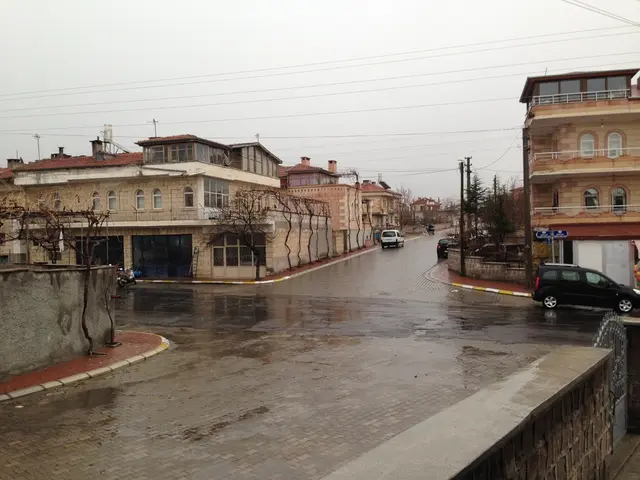Renewable energy investments face opposition in Arkansas, Louisiana, and Mississippi, as local ordinances hinder their progress, similar to the wind being taken away.
===============================================================================
In Arkansas, Louisiana, and Mississippi, local and state regulations significantly impact the development of renewable energy, particularly wind and solar power. Despite the potential of wind power acknowledged by Arkansas's Wind Energy Development Act, strict regulations have effectively halted new wind development in the state. Five counties in Arkansas have enacted moratoriums on wind and solar projects, discouraging investment and delaying progress [1].
The southern states are not alone in facing these challenges. In Louisiana, recent updates to siting regulations via HB 459 reflect ongoing attempts to manage project development more tightly, but these changes have also slowed down momentum towards renewable deployment [1]. Mississippi has taken a cautious approach, introducing Senate Bill 2227 to study turbine impacts before expanding wind developments, causing delays despite operational projects like AES’s Delta Wind [1].
These regulatory hurdles are compounded by the phase-out of federal tax credits for solar and wind projects after 2027, creating competition for subsidies within narrow timeframes, and local counties wielding significant influence through permitting and moratoriums [3]. The Department of Agriculture's recent blocking of taxpayer funding for solar panels on prime farmland in rural areas further impacts potential agricultural solar projects in the region [4].
However, there is a clear path forward for the South. By adopting smart, balanced rules, local officials can encourage investment, support economic development, and protect property rights, avoiding costly legal fights. The American Clean Power Association's Model Wind Ordinance proposes voluntary participation, science-based standards, FAA-verified safety, responsible decommissioning, and clear, predictable permitting [2].
The South can lead the way in renewable energy development, avoiding dependence on gas and coal, and mitigating price swings and pollution. Investors and landowners are prepared to lease farmland, support schools and roads, and fortify economic stability in rural communities. A dozen more utility-scale wind projects are being evaluated across the region, signaling a shift in the South's energy landscape [1].
Despite these setbacks, approximately one in five U.S. counties now restrict or ban the development of new wind and solar power. Heatmap News refers to this as a "regulatory seachange" that's stalling clean energy and driving up costs for utility ratepayers [6]. Simon Mahan, the executive director of the Southern Renewable Energy Association, and Jamie Moody, its communications director, emphasise the importance of clear rules, local benefits, and voluntary participation to boost rural economies and power a better future.
References:
[1] Heatmap News. (2022, March 10). Regulatory Seachange Stalls Clean Energy in the South. Retrieved from https://heatmap.news/regulatory-seachange-stalls-clean-energy-in-the-south/
[2] American Clean Power Association. (n.d.). Model Wind Ordinance. Retrieved from https://www.cleanpower.org/policy-advocacy/model-wind-ordinance
[3] Southern Alliance for Clean Energy. (2021, September 15). Federal Policy Update: Clean Energy Investment, Infrastructure, and Jobs Act. Retrieved from https://www.southernenergy.org/federal-policy-update-clean-energy-investment-infrastructure-and-jobs-act/
[4] Southern Alliance for Clean Energy. (2021, March 18). USDA Blocks Taxpayer Funding for Solar Panels on Prime Farmland. Retrieved from https://www.southernenergy.org/usda-blocks-taxpayer-funding-for-solar-panels-on-prime-farmland/
[5] Southern Alliance for Clean Energy. (2021, February 12). Arkansas Net Metering Policies. Retrieved from https://www.southernenergy.org/arkansas-net-metering-policies/
[6] Heatmap News. (2022, March 10). Regulatory Seachange Stalls Clean Energy in the South. Retrieved from https://heatmap.news/regulatory-seachange-stalls-clean-energy-in-the-south/
Read also:
- President von der Leyen's address at the Fourth Renewable Hydrogen Summit, delivered remotely
- Unveiling Innovation in Propulsion: A Deep Dive into the Advantages and Obstacles of Magnetic Engines
- International finance institutions, EBRD, EIB, and SEB, offer €84.8 million in loans for solar energy projects within Latvia.
- Soaring heatwaves reveal vulnerabilities in Europe's electrical infrastructure as air conditioning usage surges








